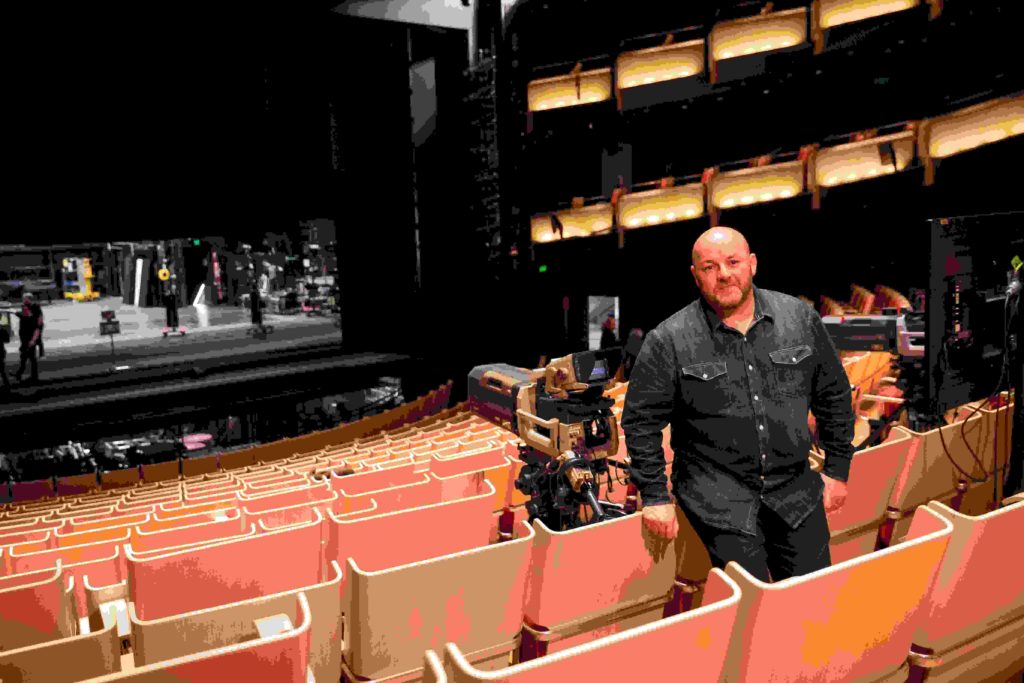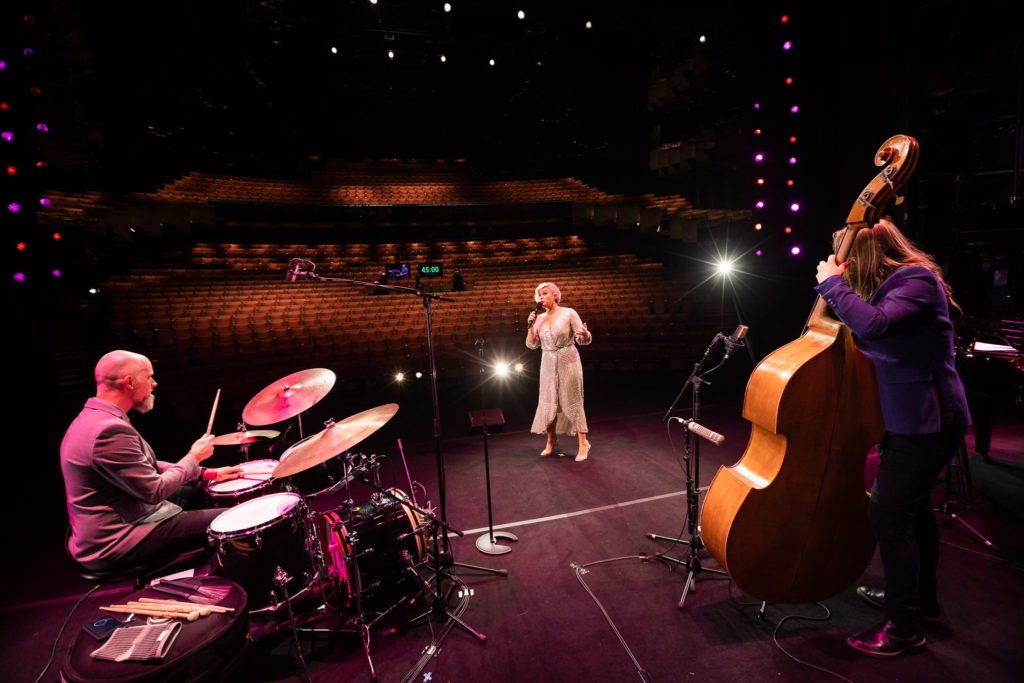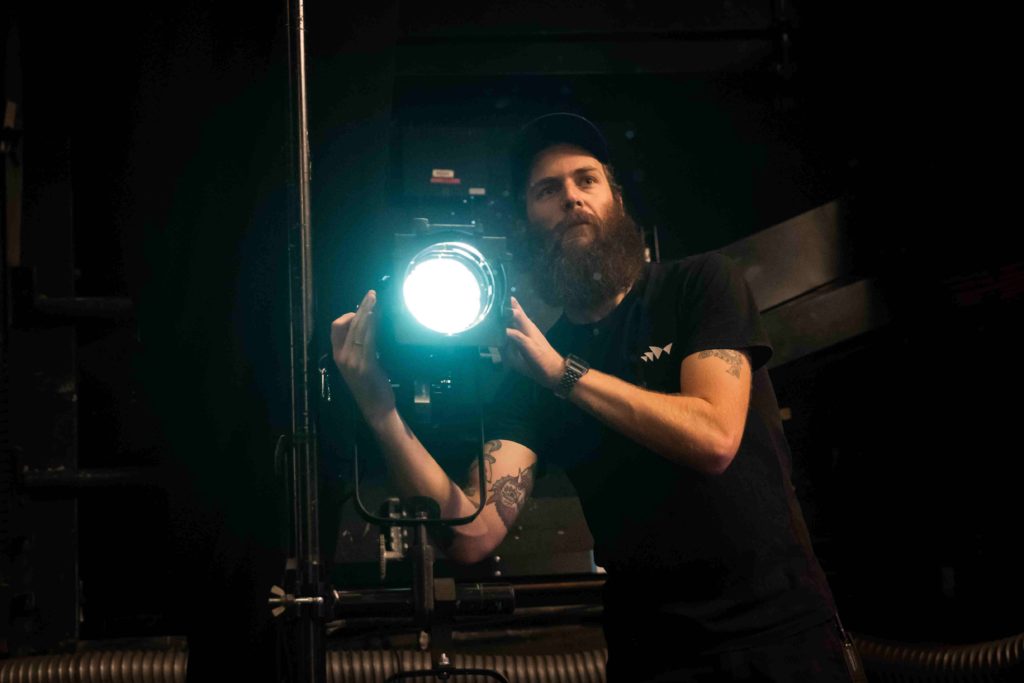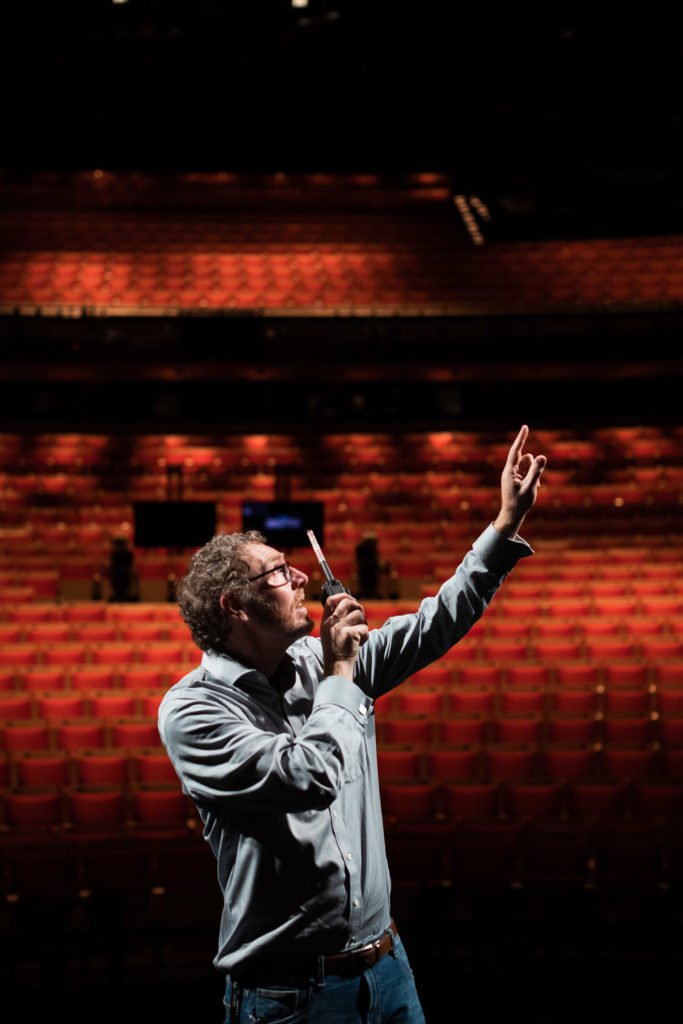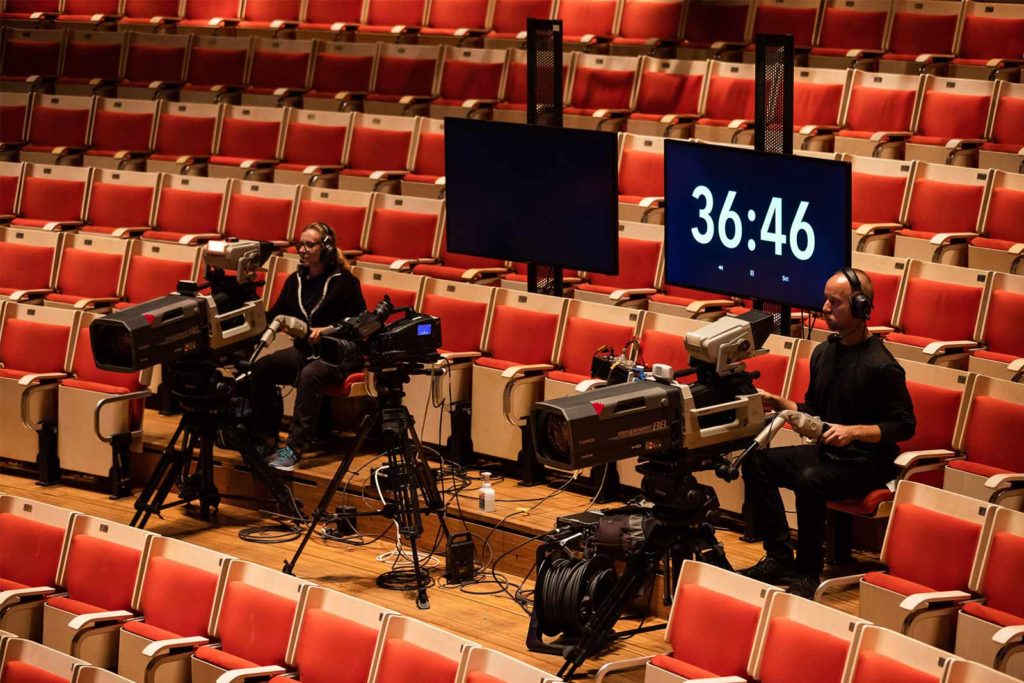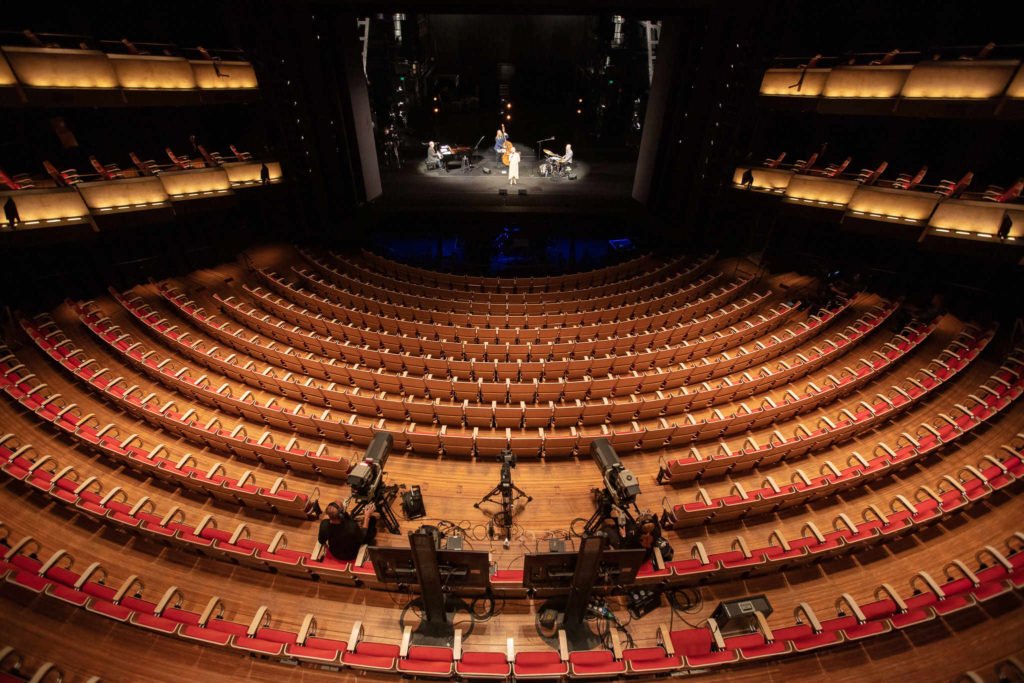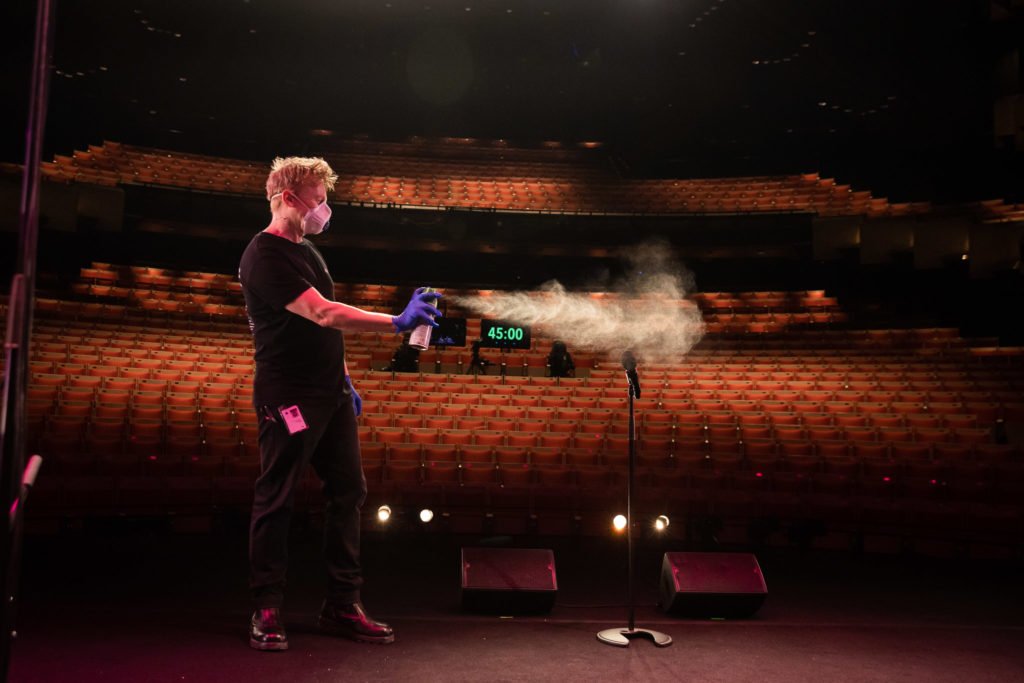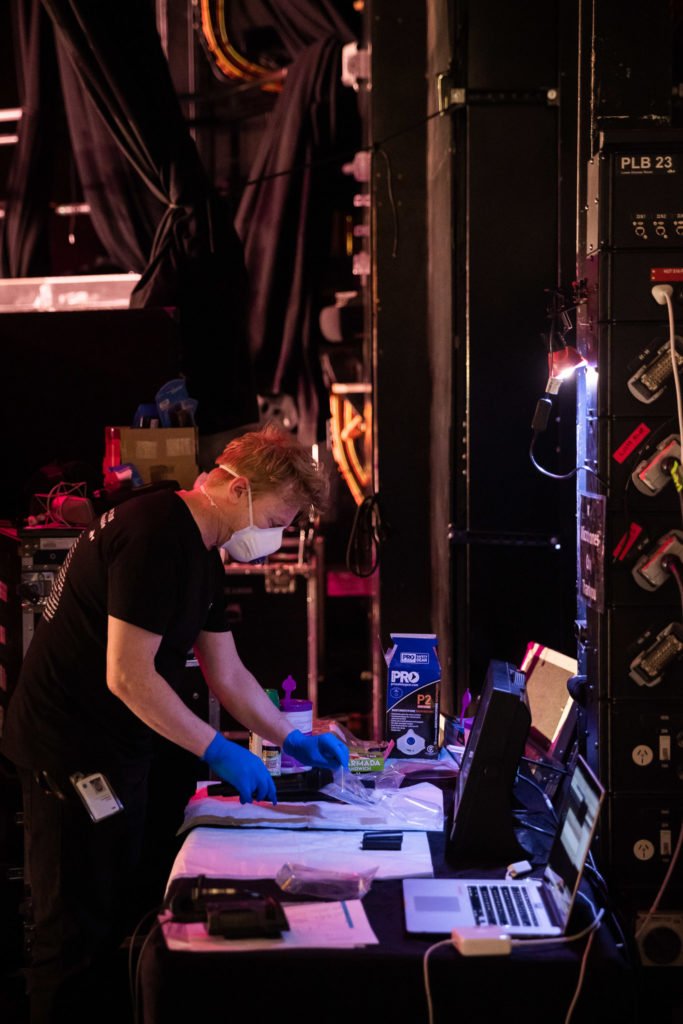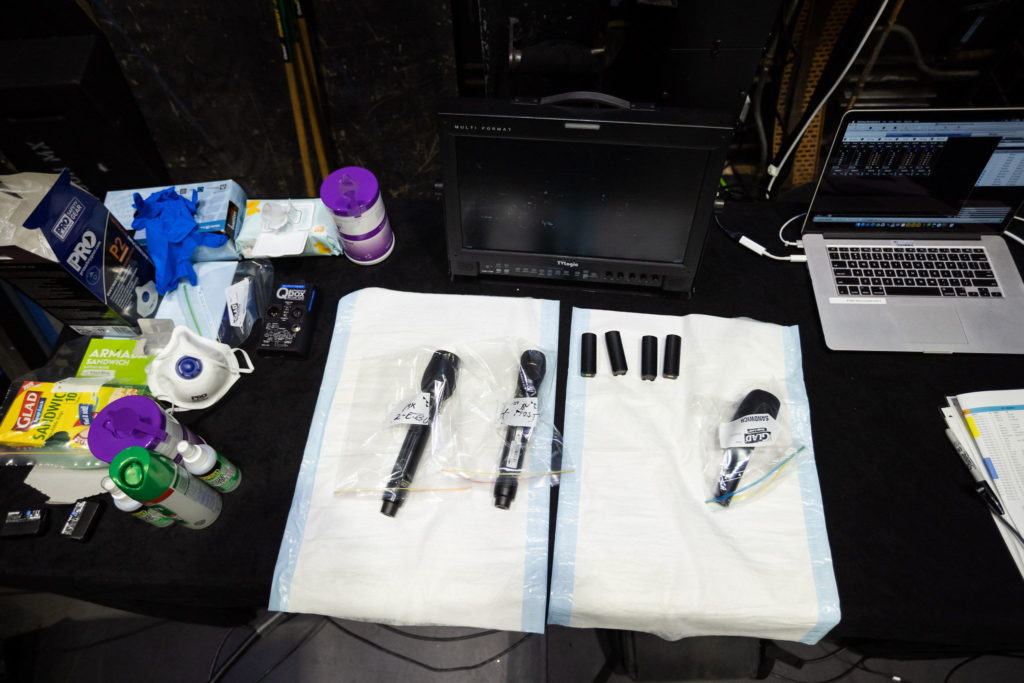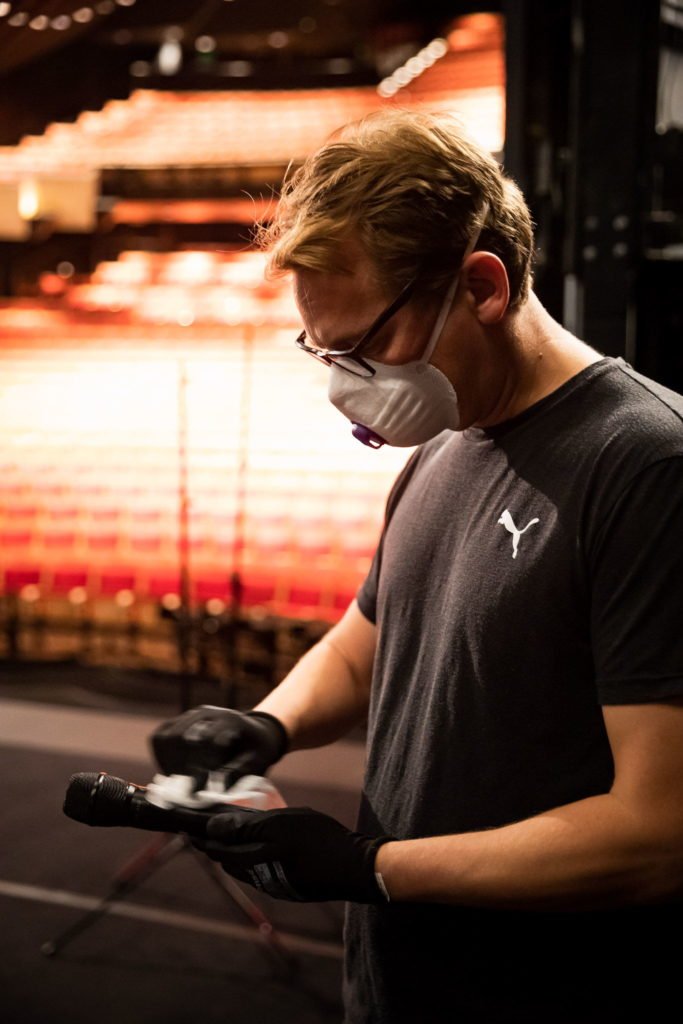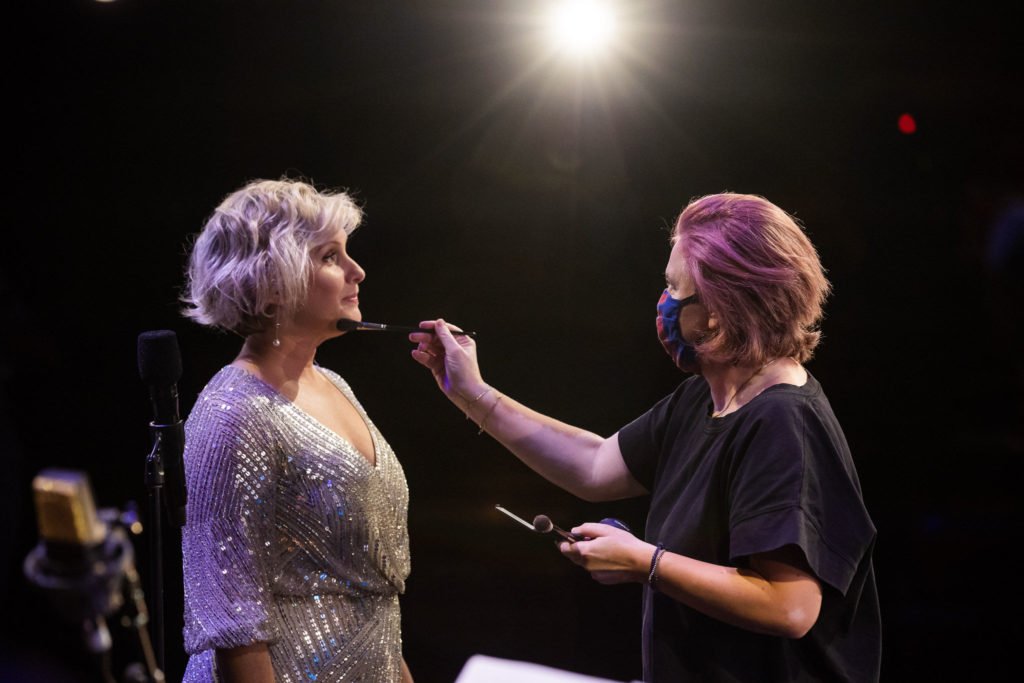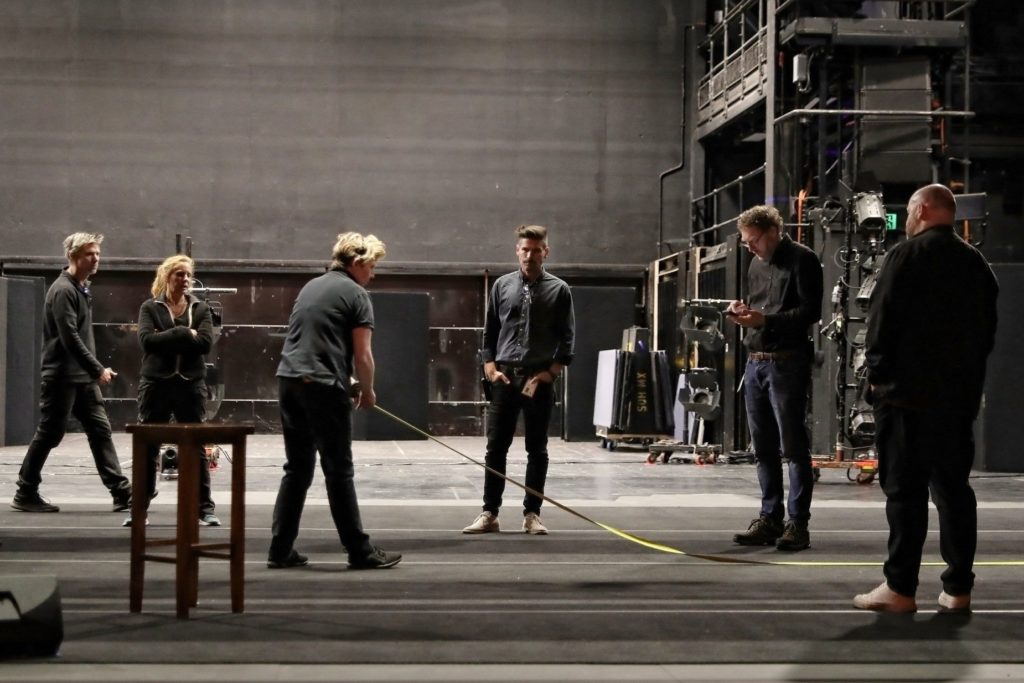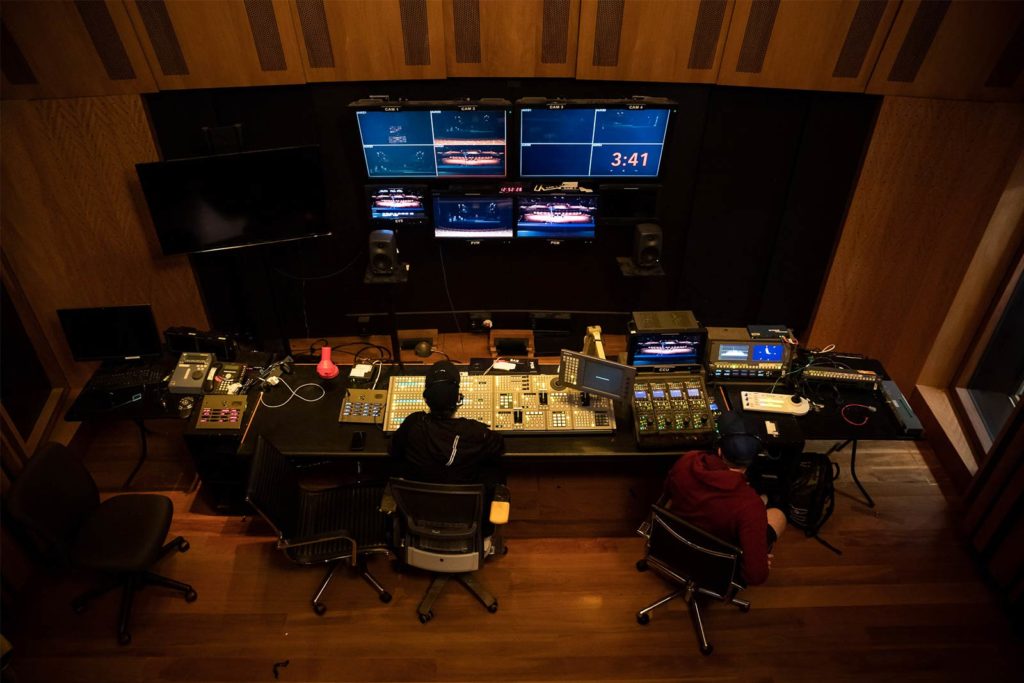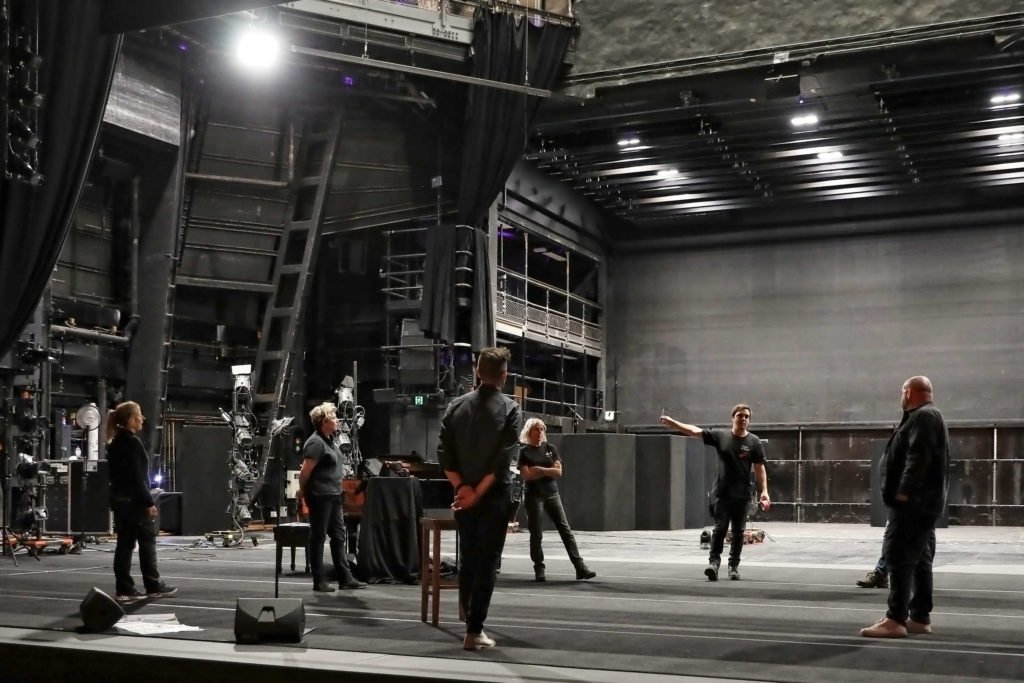News
9 Jun 2020
‘From Our House To Yours’
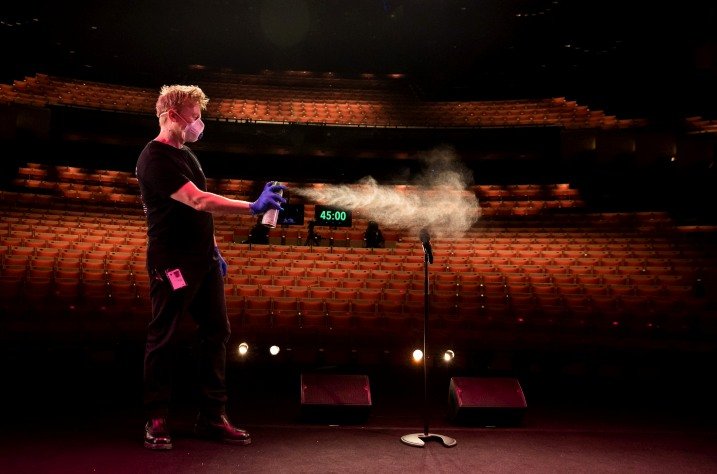
Subscribe to CX E-News
The Sydney Opera House’s Joan Sutherland Theatre goes Online
One of the most hallowed stages on Earth, usually catering to an audience of up to 1,507 seated, has been reimagined as a platform for digital broadcasts of live performances. While stages go dark, one House has kept the lights on.
The Sydney Opera House is no newcomer to digital broadcasting. Their in-house broadcast studio and team of recording professionals has been producing content since the studio went live at the end of 2013.
Their archive is a treasure trove of Sydney Opera House presented performances by local and visiting international artists spanning genres and disciplines, alongside work from resident companies.
Their digital methodologies are well established, and last year, The Opera House appointed Stuart Buchanan as Head of Digital Programming to map out a strategy to expand the operations and reach of the digital arm.
Then COVID-19 hit
“I spent my first months in the role in 2019 defining a digital strategy that was going to be rolled out over two years,” explains Stuart. “When the COVID-19 restrictions began, we rolled out that strategy in two weeks.
“We were in a great position as we’d already done the work, presented it to stakeholders, and been approved. The pandemic accelerated the plans we’d already set down. All that changed was how quickly it was implemented.”
Out of The Darkness
The other thing that had changed was the House was now dark, its theatres and concert hall out-of-bounds to audiences.
The ‘From Our House to Yours’ digital programme was born to bring life back into the building, and to employ as many artists and technicians as practical.
Creating recorded performances on Saturdays and live streaming at 8 p.m. on Saturday nights, the programme sees the Joan Sutherland Theatre become a Brechtian performance space, its infrastructure exposed and lit, and empty seats built into the broadcast.
Since the programme began, it’s hosted talks, stand-up comedy, contemporary music, cabaret, jazz, and dance, all captured with in-house gear and know-how.
“The first challenge in putting together the new programme was selecting acts,” continues Stuart. “Partly the choice was pragmatic; comedy, contemporary music, cabaret, and talks are all suited to a black-box style performance space.
“They don’t need much in the way of costumes, sets, or props, and can generally conform to a standard production spec. The other selection criteria for the digital season is to showcase the diversity of work that goes on at the House.
“While you might think of opera and ballet when you think of us, in any given week there’s plenty of contemporary music, talks, and cabaret, its often just not as visible, so the season is as far as possible a ‘regular week at the House’.”
Design Decisions
Shane Johnson, Head of Recording and Broadcast, worked with Production Manager Aubs Tredget to establish a technical design and rig that would accommodate the widest of variety acts, enable fast turnarounds, and look good on camera, all while functioning with the overlay of physical distancing, and performer and crew safety.
“We’re limited in the numbers of performers on stage,” Shane outlines. “Between the performers, camera operators and other tech’s movements, with physical distancing, we had design limitations to work around.
“The other big challenge was changing our mindset from lighting for an audience to lighting for camera. It’s all about the softness of the light. Every single light is diffuse, because no camera likes hard light.
“We also have to light for the performer’s eyes; a live audience’s eyes have more dynamic range than a camera, so even if the performer’s eyes are partly shadowed by light coming from above, they look great. With the same conditions, through the camera, everyone has black eyes because the angle of the light creates shadows under the eyebrows.
“So, we have side lights, front lights, and lots of backlighting to create depth.”
Getting The Look
“One of the biggest challenges was coming up with the overall look and making sure everyone was happy with it,” continues Shane.
“We’ve gone for a dark state on stage, only lighting certain sections, with the rest disappearing into black. Backlighting stops the performers disappearing into this darkness and lifts them out of it.”
“I applaud Stuart’s bold aesthetic decision to use the bare walls and display the stage infrastructure,” praises Production Manager Aubs Tredget.
“It’s drummed into us that you don’t break the fourth wall; you hide the gantry and fly system. It’s a tip of the hat to the times, acknowledging all the dark theatres where nothing is happening. But here’s an opportunity to bring life back to the venues, audiences back into the House, and an opportunity to share our love of live performance.”
Ready For Your Close-Up
Working completely for the camera introduced considerations that normally don’t cross a crew’s mind.
“While the tech is transferable, the big difference is understanding the audience and how the camera lens replaces them,” observes Aubs.
“It’s a different headspace. For example, the presence of a camera on stage is normally considered intrusive; everyone’s priority is the artist and audience, and camera works around that. But now, the camera takes a precedence that even the artist must acquiesce to.
If the camera can’t see something happening on stage, the broadcast doesn’t work. It’s a different discipline, which is why film and theatre acting are rightly considered two different crafts.”
The mindset of the entire crew had to switch from theatre to broadcast. “We’re a theatre, the crew are mostly from theatrical backgrounds, and had to get used to looking at and lighting for a screen,” reveals Shane.
“We’ve rigged monitors everywhere. Lighting have monitors running both the live programme cut and feeds from individual cameras. We’ve put in concealed stage monitors for the stage manager, audio, and the lighting supervisor.
“There are monitors in the green room for the performers, and their make-up artists. The choices the vision director makes are a decision made for the entire audience. We have to be engaging, or we lose the audience.”
The audience’s absence is both noted and used as part of the aesthetic.
“We’ve set up a shot of the empty house, lit and visible,” confirms Shane. “Every single performer we have hosted has thrown to it or joked about it in some way; they’ve really enjoyed it.
“It’s counter-intuitive, as you’d think performers need an audience to feed off, but the energy of their performances has been great. They really like to play on the fact there’s no-one there.”
Working With the Flow
With the Opera House already possessing an enviable fibre optic network that links all performance spaces back to the broadcast studio, getting the cameras and feeds set up was just a regular day at work for the crew.
More difficult is adjusting to the compressed timeframe and rapid changes in style of performances. “We’re effectively creating two new performances a day,” illustrates Shane. “We come in, there’s a camera rehearsal, the director works out a shot list and camera positions.
“There’s a one-hour rehearsal with all six cameras and audio. That’s recorded and played back so the director can take notes and refine it. Then there’s the record, which is released a day or two later, and then the live stream at 8 p.m.
“With two acts in the same day, we’ll set up the first upstage and the second downstage. While the workflow is really not that different to a regular gig, the challenge is delivering everything in the time allocated, while there’s enormous variation from day to day in lighting and shooting style as we change from rock, to cabaret, to tap, then talk.”
And then there’s the virus to consider.
Staying Safe
“For me, the most challenging aspect of what we’re doing is the COVID-19 overlay,” states Aubs.
“We were already experienced in broadcast and streaming, and techniques such as bringing in remote interviews; most famously Chelsea Manning, after she was denied a visa.
“To keep everyone safe, we’re working with the heads of each technical team to determine operational procedures, to minimise the risk for individuals. The Opera House has a dedicated event safety team that works through all the information coming from WorkCover and the Department of Health.
“As guidelines are updated, we apply them. The Event Safety team are constantly monitoring the day-to-day activities of our crew; they work directly with the techs on safe work practices and risk assessments.
“It’s absolutely phenomenal the amount of work they’ve done in the last months.”
With the capacity of the stage and safe physical distances defined, what’s the biggest challenge for the crew?
“We’ve found it’s audio that’s impacted the most,” relates Aubs. “They come into contact with equipment that comes into contact with the performer. Mics, mic stands, stools.
“Audio had to sit down and think through every aspect of their day-to-day and develop a mitigation. So now we do not encourage IEMs or headset mics in the digital stage environment. Our techs can’t physically fit them, so unless the performer is experienced and comfortable doing it themselves, we can’t use them.
“We encourage wedges for monitoring, and handheld microphones. Handheld radio mics are only used by one performer. Audio has set-up two long trestles tables with barriers around them. The mics laid out in a specific area, like a props table, and labelled.
“Audio take them out to the mic stand, and collect and take them back to their specific spot when they’re done. They wear gloves, and treat the mic as if it’s infected; they use a little plastic bag turned inside out to handle the mic, like a food worker at a deli. Everything is then disinfected.
“It’s so much extra work. The preparation before and after is quite time consuming, and audio are carrying the load.”
Keeping The Lights On
“I’m incredibly heartened by the agility The Sydney Opera House has shown in developing and producing ‘From Our House to Yours’,” praises Stuart Buchanan.
“The Sydney Opera House is an icon, and people look to us for ideas, direction, and leadership. We can use our position and the resources we have at our disposal to signal that, in one corner of Australia, we’re doing our utmost to keep the lights on.”
From Our House To Yours – Gear Spec
Cameras
• 2 x Sony HDC2400 Camera Chains
• 2 x Sony HDC-P1 Camera Chains
• 1 x Sony PMW500
• 1 x Sony BRC-H900
Lenses
• 2 x Fujinon XA 88 x 8.8BE SM
• 2 x Fujinon HA 42 x 9.7BE RD
• 1 x Fujinon HA 22 x 7.3 BRD
• 1 x Canon HJ14ex4.3 BIASE HD
Camera Control
• 2 x Sony HDCU2000 CCU
• 2 x Telecast Copperhead 3400
• 6 x Sony RCP 1500
• 1 x Sony CNA-1
Recording / Playback
• 2 x EVS XS Production Servers
• EVS IP Director Suit
Signal Distribution
• Riedel Micron
• Riedel Mediornet
Broadcast Audio Console
• Yamaha Rivage PM7
DAW
• Pro Tools Ultimate
Lighting
• MAC Quantum Wash @ 860w x 12
• MAC Quantum Profile @ 565w x 10
• Martin MAC Encore Performance WRM @ 596w x 17
• Martin MAC 101 CT @ 123w x 8
• Robert Juliat Dalis 860 @ 300w x 10 (floor)
• Mac Viper Profile @ 1.19kw x 4 (side / pan position)
• Strand SL 15/32 Zoom @ 575w x8
• Selecon Arena High Performance Fresnel @ 2kw x20
• ETC Source 4 Lustr2 x40
Up Stage Illumination Option
• 4 booms of 4 x 1.2K fresnels
• 4 rolling booms with 2 1.2k fresnels
• 8 x Dalis footlights
• Single Dalis Booms x4
Lighting Control
• ETC EOS T + ETC GIO Back-Up
Audio
On Stage Monitor Console
• Yamaha QL 1
• Yamaha 3224d2
Stagebox Monitoring
• d&b m4s as required
• d&b e8 for presenter foldback
• Shure PSM 1000 In Ear Monitors
• d&b D20 amplification
Microphones
• Range of microphones available from Shure, Sennheiser, Neumann, DPA, B&K
• Shure Axient Wireless Microphones and transmitters
CX Magazine – June 2020
LIGHTING | AUDIO | VIDEO | STAGING | INTEGRATION
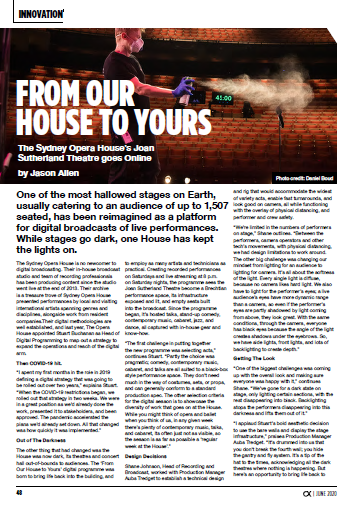
Entertainment technology news and issues for Australia and New Zealand
– in print and free online www.cxnetwork.com.au
© VCS Creative Publishing
Subscribe
Published monthly since 1991, our famous AV industry magazine is free for download or pay for print. Subscribers also receive CX News, our free weekly email with the latest industry news and jobs.

